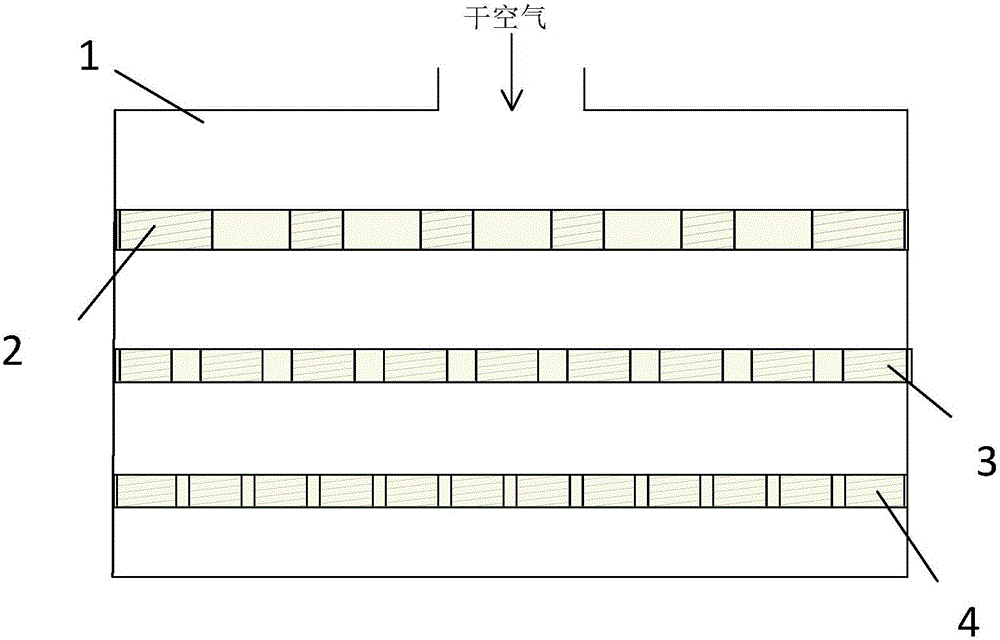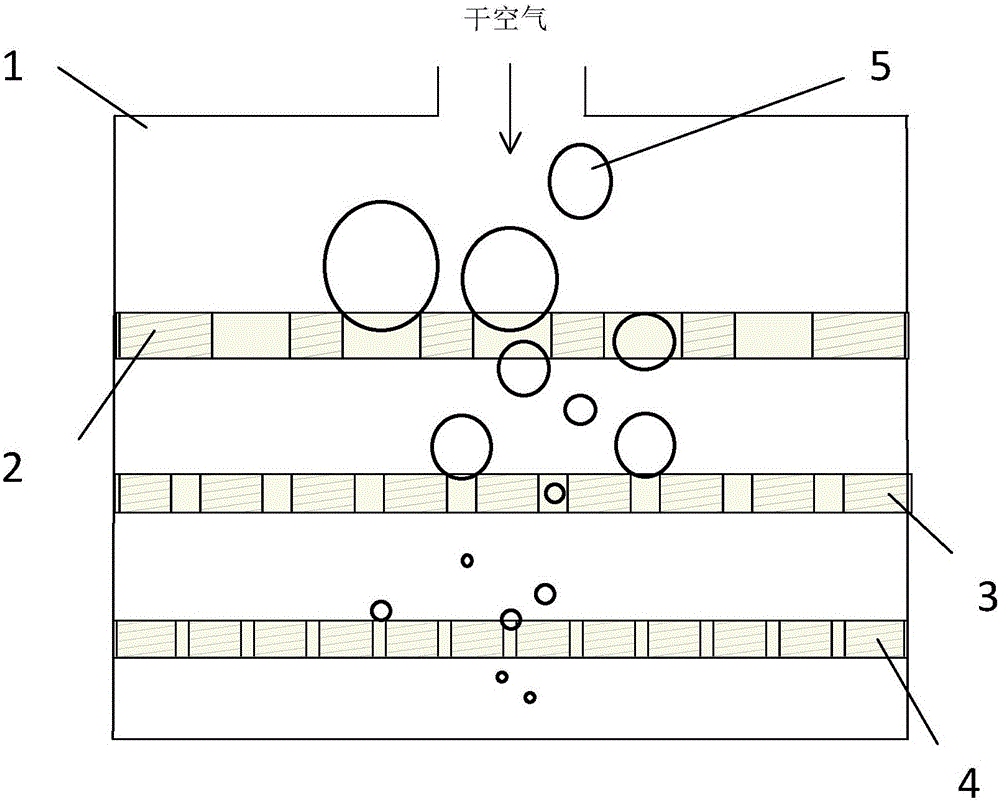PM2.5 monitoring method based on particle size
A particle size, a certain amount of technology, applied in the field of chemical analysis, can solve the problems of rough monitoring results, deviation of measured data, low results, etc., and achieve the effects of accurate and reliable monitoring results, controllable through-hole shape accuracy, and convenient extraction and detection.
- Summary
- Abstract
- Description
- Claims
- Application Information
AI Technical Summary
Problems solved by technology
Method used
Image
Examples
Embodiment
[0027] A PM2.5 monitoring method based on particle size is to screen the fine particles according to the size of the fine particles, comprising the following steps:
[0028] (1) A certain amount of dried air to be tested is passed into the airtight container 1, and three filter screens are arranged from top to bottom in the airtight container 1, including filter screen 2, filter screen 3, and filter screen 4; The through hole diameter of 2 is 2.5um, which is used to filter fine particles 5 with a particle size smaller than 2.5um; the through hole diameter of the filter screen 3 is 1.5um, which is used to filter fine particles 5 with a particle size smaller than 1.5um; The diameter of the through hole is 0.5um, which is used to filter fine particles with a particle size of less than 0.5um5;
[0029] (2) Then the airtight container 1 is sealed and left to stand for 10 to 30 minutes, so that the fine particles 5 in the air to be checked are fully filtered through each filter scre...
PUM
 Login to View More
Login to View More Abstract
Description
Claims
Application Information
 Login to View More
Login to View More - R&D
- Intellectual Property
- Life Sciences
- Materials
- Tech Scout
- Unparalleled Data Quality
- Higher Quality Content
- 60% Fewer Hallucinations
Browse by: Latest US Patents, China's latest patents, Technical Efficacy Thesaurus, Application Domain, Technology Topic, Popular Technical Reports.
© 2025 PatSnap. All rights reserved.Legal|Privacy policy|Modern Slavery Act Transparency Statement|Sitemap|About US| Contact US: help@patsnap.com



